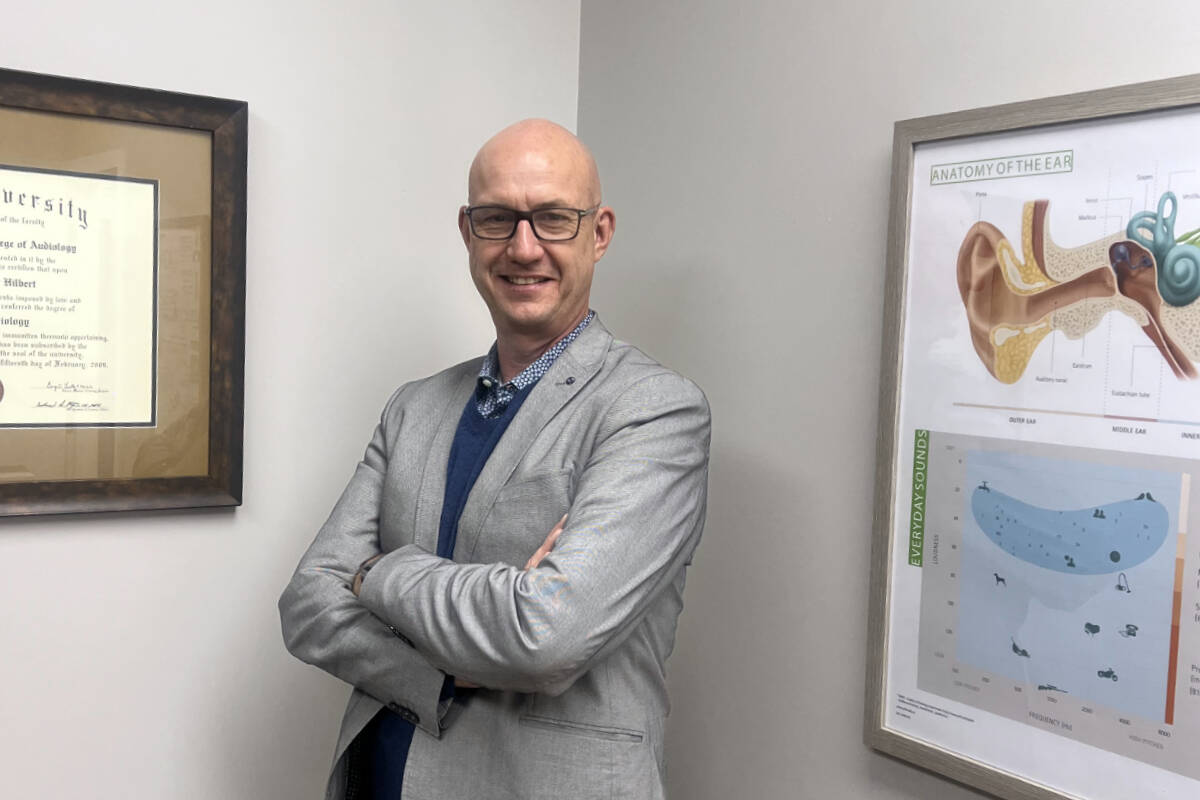Not all hearing losses are the same

Dr. Markus Hilbert, Au.D., Doctor of Audiology from Pardon Me Hearing in Kelowna.
‘Hearing loss’ is a highly generalized term that’s often thrown about to encompass a variety of different hearing complications.
Understanding your own or a loved one’s specific type of hearing loss is vital to understanding whether hearing aids or other hearing assistive devices are the right solution.
“The ear is made up of four distinct areas and each area needs to be functioning properly to allow for hearing and speech,” says Dr. Markus Hilbert, Au.D., Doctor of Audiology from Pardon Me Hearing in Kelowna. “When someone is experiencing symptoms of hearing loss, we have to look at all four parts of the ear in order to diagnose and treat the correct form of hearing impairment.”
How hearing works
- Sound vibrates into the cochlea or organ of hearing. Sound changes from air vibration to skin vibration of the eardrum to bone vibration of the ossicles or smallest and only free-floating bones in the body, and then into fluid vibration inside the cochlea. Problems here can lead to a conductive loss.
- The cochlea has specific receptor cells to pick up sound and once stimulated, trigger the auditory nerve to fire. Problems here can lead to sensory hearing loss.
- Next the VIII Cranial Nerve sends the auditory signal to the brain. Problems here can lead to a neural hearing loss.
- Finally once in the brain, the sound has to be processed. Problems here can lead to a ‘hearing in noise’ SNR loss.
A combination of problems in areas one, two and three, is called a mixed loss and a problem in areas two and three, is a sensorineural hearing loss, the most common type of loss.
The hardest loss to resolve is ‘hearing in noise’ loss. Difficulty in this area means hearing aids may not be enough because the sound is audible but not clear. Easy-to-use, hand-held or table-top props called Roger mics can help.
“Not to be confused with the telecommunications giant, ‘Roger’ is a name chosen by a Swiss hearing aid company to convey the importance of hearing and understanding, as Roger is the word used when pilots hear and understand their transmissions,” says Dr. Hilbert. “Roger technology adds 20 dB of speech enhancement over noise, while hearing aids offer up to about 8 dB. Generally costing upwards of $4000+, we fit them for half that price at Pardon Me.”
Hearing loss prevention should always be priority number one, says Dr. Hilbert, pointing out that hearing aids are a tool, not a cure. The goal should be affordable and functional hearing so that no matter what kind of damage there is or what kind of loss is experienced, the right solution can be found.
“Hearing assistive devices can make the world around you louder and clearer but they don’t fix existing damage. Hearing tests should become part of your regular health routine starting at the age of 50 or at the earliest sign of hearing difficulty,” he says.
Find Pardon Me Hearing online or connect with them over the phone at 778-478-3277 (Kelowna Location) or 778-475-4327 (Vernon Location) and be sure to follow them on Facebook and Instagram.
READ MORE:
Don’t let hearing loss sideline you from your favourite hobbies
The ability to hear shouldn’t be a luxury item for seniors
Struggling with balance? It could be tied to hearing loss
Children should have their hearing checked at birth and before entering primary school
